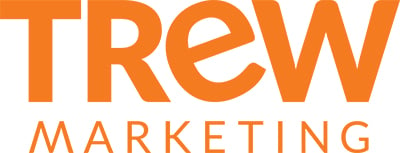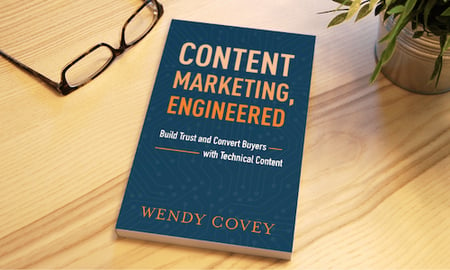12 min read
Your Top Questions Answered from the 2025 State of Marketing to Engineers Webinar
 Wendy Covey
:
3/27/25 6:49 AM
Wendy Covey
:
3/27/25 6:49 AM
The 2025 State of Marketing to Engineers report, created in partnership between TREW Marketing and GlobalSpec in collaboration with Elektor International Media, turned heads in the industry. To dive deeper into the insights, we hosted a live webinar that brought together 626 professionals from marketing, sales, and leadership—all eager to more deeply understand how to reach and engage technical buyers.
The Q&A box lit up with dozens of thoughtful, forward-looking questions. We couldn't get to them all live, but we know they deserve attention. So we’ve compiled your questions here, grouped by topic, and paired with thoughtful answers from our team.

Missed the live webinar? Watch it on-demand.
Real Questions. Real Answers.
General Research Questions
Before we dig in, we received several broader questions about the structure and scope of the research itself. From the demographics of survey respondents to year-over-year trends, attendees were curious about how deeply the data could be sliced and what shifts were shaping this year’s insights. These questions reveal how much marketers want to ground their strategies in solid, contextual understanding.
This is a suggestion for the future: The engineering community is very broad. For me particularly, I'm interested in the behaviors of civil engineers, structural engineers and design engineers. Their needs and behaviors are much different than IT engineers (I've targeted this audience in different job). Ex. you won't see a structural engineer in GitHub but you will see an IT engineer there.
Great feedback about breaking out research results by industry. While we've been resource-constrained to do much of this in the past, we are working on a research GPT to provide more insights efficiently (stay tuned for more info!). That said, our sample sizes for specific engineering disciplines vary, and in some cases, they may be too small to draw meaningful conclusions. We encourage supplementing our findings with industry-specific research sources for the most relevant insights.
How significant has the shift in the results been as a result of expanding the respondents to have more representation outside North America?
Representation outside of North America increased from 51% in 2024 to 62% in 2025, with most of the increase coming from respondents in Europe. For any question showing a large year-over-year swing, we examined whether regional shifts might be the driver. While this is a notable percentage point increase, significance depends on the underlying sample sizes and variability in responses. In most cases, North America and Europe are tracking very similarly. You'll see examples of this in the regional data on podcasts and trade shows.
We also observed these similarities when examining the regional breakout of information sources (e.g. "where do you routinely seek information when researching a product or service for a work-related purchase"), which was not included in the final report due to space limitations. Each region mapped closely together, with North America and Europe tracking almost identically across the top 7 responses.
It would also be fantastic to see the results year-on-year and how they have changed over time...
Yearly changes in the data are very interesting indeed! We study these with every benchmarking question, and call out the biggest swings within the report. The biggest movers included 1) technical publications gaining ground as a top information source, up 36 percentage points; 2) X and Facebook dropping by more than 35% as valued social media sources; and 3) podcast listenership down twenty-six percentage points. You can also see three years of data for newsletter subscriptions on page 26 of the report. This will be another great use case for our future research GPT! In the meantime, check out the past reports in our archives.
Buying Process
One of the biggest takeaways from this year’s research? Engineers are spending more time in stealth mode. In fact, 60% of the buying process happens before they ever contact a company.
“I love presenting this statistic to sales as a powerful reason why they should interact on LinkedIn and collaborate with marketing on messaging. Both actions can influence that first 60% before technical buyers are ready to interact with salespeople."
Wendy Covey
Do you have a trend for the percentage of the buyer's journey that happens online over time?
While we've asked this question consistently over the years, the answer choices have changed. In 2022 and 2023 we offered a selection of four responses, the most popular being 26-50% of the buyer's journey in both years. In 2024 we switched to a 1-100 numerical scale, and the response was 66%. In 2025 we used the same 1-100 numerical scale and the response was 60%.
What makes engineers finally talk to sales?
Complexity tops the list. They want help understanding technical solutions, validating online research, or getting clarity on pricing and availability. If that info isn’t easily found online, it creates friction—and prompts a call.
Information Sources
Engineers are nothing if not meticulous—and their go-to sources reflect that. This year, vendor websites and online trade publications tied for first place as the most trusted and frequently used sources for product research. But the nuances beneath that are what caught attendees’ attention. From age-related media preferences to concerns over brand visibility in stripped-down editorial, the conversation around information sources quickly turned into one about credibility. The questions in this section dig deeper into how engineers vet their sources—and how marketers can earn their trust.
I noticed the survey respondents age are quite different from last years. Do you think this has a major impact in regards to podcast?
Interesting question, especially since the 2025 survey did have a higher representation of technical buyers under age 56. We took a deep dive into the listenership age differences in our 2024 report (page 21), and found that younger technical buyers under the age of 56 were twice as likely to listen to podcasts as their older counterparts.
Do you think the lower ranking for LinkedIn is because of the quality of information shared by suppliers and vendors?
While LinkedIn is one of the top social media channels technical buyers turn to (page 14), they rank LinkedIn lower than information sources such as vendor websites and technical publications when researching to make a purchase (page 11). We didn't study the "why" behind this lower ranking, but we suspect the answer lies in the purpose. When actively researching to make a purchase, it may be more difficult to find credible information about a product or service within the social media noise.
Speaking of LinkedIn, you may be interested in our 2023 report (page 19) where we took a deep dive into what type of content technical buyers find most compelling on the platform. You can access past research in our archives here.
Do we have more data regarding which trade publications engineers find most helpful?
We didn't ask which specific trade publications technical buyers found most helpful. This would be an interesting question to consider for future research, particularly segmented by industry. In the meantime, you can evaluate trade publication brands by looking at metrics like website traffic, audience composition, and keyword rankings, along with qualitative signals like relevant content focus, engagement, and industry trust. Prioritize those with strong reach among engineers and technical decision-makers, high-quality content, and influence in your niche.
Visibility with technical publications is interesting. We publish a lot of content, yet often you'd be forgiven for thinking it comes from someone else. Our own research suggests we're not visible in publications despite being published hundreds of times. Editors strip out branding and links, and surrounding ads highlight competing brands. What strategies would you suggest to overcome this?
Technical publications offer credibility, but often strip branding and/or links, making it hard to claim visibility. To counter this, focus on amplifying your authorship and expertise beyond the publication itself. Elevate named contributors (engineers, product leads) to build recognition, then repurpose and promote the content across your own channels—LinkedIn, newsletters, and your website. Create a branded hub that showcases all your published work, reinforcing your voice even when the outlet doesn’t. When possible, negotiate co-branded or sponsored editorial opportunities, or support your presence with contextual ads that reinforce your message. If the publication doesn’t carry your brand, your ecosystem must.
With regards to information sources, where would you include analyst firms/reports?
The information sources question did not include analyst firms/reports as an option due to the need for brevity. (We are constantly struggling with the tradeoff of survey completion rates versus gathering more insights!). We suggest referencing pages 24-25 of the 2025 research report for findings regarding independent sources that speak towards information from analysts. Also, take a look at the 2023 research report on page 14. The data shows that 91% of technical buyers trust content published by industry analysts.
You can access past research in our archives here.
Do you see growth in the B2B influencer space? Are they full- or part-time, and how are they being deployed by B2B marketing teams?
Yes, we are definitely seeing growth in the B2B influencer space, particularly within engineering and deep tech industries. However, it's important to note that most of these individuals prefer to be called "creators" or "technical experts" rather than "influencers." Many operate part-time while working in their primary fields, but some are transitioning into full-time content creation as the demand for authentic, knowledgeable voices continues to grow.
YouTube is the most popular platform for B2B creators, especially those sharing technical content and showcasing their expertise. This growth aligns with engineers' preference for high-quality, educational video content. B2B marketing teams are deploying these creators in various ways, including sponsorships, collaborations, and inviting them to speak on podcasts and webinars. They are particularly valuable for building credibility and trust with specialized audiences who value technical expertise and relatable demonstrations.
If you want to effectively collaborate with B2B creators, it's essential to identify those with credibility and trust within your target market and explore partnership opportunities that align with your brand’s objectives.
“One of the best things that we can do is have our executive teams showing up on influencer podcasts to get our brand in front of their audience and finding new ways to partner with them. “
Udo Bormann
Why did you not ask questions about industry influencers?
Each year we ask a combination of benchmarking questions and take deep dives into different areas of interest. While we asked about independent sources (see pages 24-25 of the research report), which include influencers, our most comprehensive data on the subject can be found in the 2023 report on pages 21-24.
You can access past research in our archives here.
Content Preferences
Not all content is created equal—especially in the eyes of an engineer. Our research confirms what many marketers already suspect: engineers want technical depth, clear data, and useful details. But how do you strike the balance between informative and overwhelming? What deserves to be gated? How do you localize content for global audiences without sacrificing accuracy? These questions tackled the heart of content marketing strategy for technical buyers, and the answers provide a helpful blueprint for doing it right.
Can you comment on best practices to gate content and how detailed a form should be to gain access?
When gating content for engineers, it's best to reserve forms for high-value, mid-to-bottom funnel assets like CAD drawings, white papers, webinars, and product configurators. Top-of-funnel content such as blog posts or datasheets should remain ungated to build trust and visibility. Engineers are generally willing to provide basic information like their work email, name, company, and job title—so keep forms short, ideally with three to five fields. Always match the form’s length to the perceived value of the content, and ensure any follow-up delivers relevant, helpful information rather than an immediate sales pitch.
In the 2022 research report (page 20), we found that 83% of technical buyers were willing to fill out a form in exchange for technical content, and the types of content most enticing included white papers, CAD drawings, webinars, and in-depth case studies.
Any comments regarding the balancing of overwhelming technical detail and innovation with overwhelming marketing content not forgetting the expected hype?
Engineers want to hear about innovation, but not at the expense of clarity or credibility. To strike the right balance, focus on substance over hype—explain what’s new, why it matters, and back it up with technical details, data, or real-world use cases. Overly polished marketing language can erode trust, while clear, informative content builds it. The key is translating innovation into practical value without overwhelming buyers with jargon or fluff.
What ability is there for generating local language data sheets with accuracy? A rough translation might need interpolation for a literate and numerate engineering buyer.
Generating accurate local language data sheets requires a combination of AI tools and human expertise. While AI tools like DeepL Pro can provide rough translations, they often fall short with technical terminology. The most effective approach involves using AI for initial translation, followed by review by native-speaking engineers to ensure technical accuracy. Maintaining glossaries of technical terms and using translation memory systems like SDL Trados or MemoQ ensures consistency. User testing by regional engineers helps verify clarity and precision. Companies that successfully localize their content tend to build stronger credibility and trust with their audience. Ultimately, combining AI translation with expert human validation is essential for producing reliable, technically accurate data sheets.
Could you speak on email marketing - if summarizations aren't what engineers want to receive, what information would be good to send in this realm?
Our research indicates that engineers prefer direct access to detailed, factual information rather than summarized conclusions—especially if those summaries are generated by AI. This aligns closely with engineers' strong affinity for newsletters. Effective email marketing in this space involves providing engineers with links to detailed data sheets, technical publications, CAD drawings, and white papers, paired with clear, factual headlines that quickly convey relevance. Additionally, offering personalized content directly related to the products or solutions engineers regularly use increases both engagement and trust. By ensuring transparency and easy access to comprehensive resources, marketers can effectively address engineers' preferences and information needs.
Social Media
Ah, social media—the double-edged sword of modern marketing. Engineers are definitely using it, but not always in the ways marketers expect. YouTube continues to dominate, while platforms like X have seen drops in perceived value. Meanwhile, GitHub’s rise is less about “social” and more about shared technical rigor. Attendees had plenty of questions about how to navigate this space.
What type of technical content works best on YouTube for an engineering services company?
We've asked many questions about video content preferences over the years and have found demo videos and how-to/instructional videos to be the most popular. While we have not isolated the responses specifically for engineering services companies, we've seen great success with these types of videos in our work with engineering services companies.
Is there a European counterpart to LinkedIn or is LinkedIn strong there too?
LinkedIn is indeed very strong in Europe and widely used by professionals across various industries. However, there are some regional platforms that are popular, particularly in certain countries.
XING is quite popular in Germany, Austria, and Switzerland (the DACH region). Unlike LinkedIn, XING is more focused on job searching and career development rather than broader business networking. It's primarily used for finding job opportunities and connecting with recruiters within the German-speaking markets.
Since GitHub is so important, can you provide resources/links to help participants understand just WHAT GitHub is? NOT your typical social platform for sure! Hard for some to wrap their heads around
GitHub is a web-based platform used primarily by developers and engineers to collaborate on code, manage version control, and share technical projects. Unlike traditional social platforms, it's centered around repositories (project folders) where users can contribute, review, and discuss code, making it a trusted resource for peer-vetted solutions, open-source tools, and product integrations.
Here are a few helpful resources to help participants better understand GitHub:
- How to Code (Download) or Clone Something From GitHub (YouTube explainer video from Elektor)
- GitHub Docs – Getting Started (Official beginner guide)
- What is GitHub? by GitHub (2-minute explainer video)
- GitHub Learning Lab (Interactive app for learning GitHub workflows)
Artificial Intelligence
Despite the explosion of AI tools, engineers are still skeptical. This year’s report showed trust in generative AI sits at just 4.4 out of 10, down from 6.5 last year.
AI might be everywhere right now, but when it comes to how engineers use and trust it, it’s complicated. The 2025 report shows that while adoption is growing, trust is declining. Engineers are understandably cautious, especially when they can’t verify the source of the information AI provides. In the webinar, we talked about how marketers can use AI responsibly and transparently, especially when serving a technical audience.
The questions in this section reveal a deeper interest in how to integrate AI into the research journey without undermining credibility.
When it comes to AI, what platforms perform best in different areas of research?
Our research found that 58% of engineers now use generative AI tools during the purchasing process, but their trust in these platforms remains moderate, averaging just 4 out of 10 (down from 6.5 out of 10 in our 2024 report). This indicates that while AI is being adopted, especially for tasks like early-stage research and drafting content, engineers are cautious and seek to validate AI-generated information before relying on it for critical decisions.
Generative AI tools, including platforms like ChatGPT, are most useful during the early research and ideation phase, helping technical buyers sift through large amounts of information, summarize findings, or generate baseline content. However, the report reinforces that engineers prioritize credibility—they continue to rely heavily on trusted sources such as vendor websites, technical publications, and independent product reviews for deeper evaluation. In short, AI platforms are gaining traction for efficiency and speed, but they’re not yet replacing the rigor and reliability of human-vetted content in the decision-making process.
Do you think engineers do not use AI for evaluating because they do not trust it enough to not hallucinate at this point in time?
Engineers need information from credible, trusted sources. When they use generative AI, it is difficult and sometimes impossible to identify the originating source, which is an issue for most technical buyers (and particularly those working on critical applications). Until AI can reliably show its sources and maintain technical accuracy, engineers will continue to lean on trusted resources like vendor documentation, industry technical publications, independent reviews, and peer input during evaluation.
Brand
This section dives into how brands can stand out in a crowded field of technically similar competitors. From tariffs and global sourcing to thought leadership and vendor location, attendees wanted to understand what really moves the needle.
Will location of vendor be a large issue due to tariffs?
Location of a vendor can become a significant issue due to tariffs, but its impact largely depends on the industry, the complexity of the product, and global supply chain dynamics. While our research doesn’t directly cite tariffs, it does show that technical buyers prioritize product performance, technical fit, and trust in the vendor over geography. That said, in categories where tariffs can drive up total cost (e.g., electronics, industrial hardware, or materials), location becomes a bigger consideration, especially in procurement and supply chain discussions.
Engineers may flag vendor location as a secondary factor—more so during later stages of evaluation, when total cost of ownership and lead times are scrutinized. In highly commoditized or cost-sensitive markets, tariffs can tip the scale away from overseas vendors, particularly if domestic alternatives offer similar technical specs and support.
How can you reliably differentiate from other manufacturers who sell extremely similar products?
The 2025 State of Marketing to Engineers report emphasizes one key theme: building trust through credibility and expertise. Engineers aren’t just comparing specs—they’re evaluating how well a vendor understands their challenges and how confidently that vendor can support a successful solution.
One major differentiator is technical thought leadership. The report highlights that engineers consider industry expertise the top indicator of a company’s credibility. Manufacturers who publish high-value, problem-solving content—such as detailed product demos, datasheets, CAD models, technical publications, and independent reviews—stand out as trusted advisors, not just suppliers.
Final Thoughts: Engineers Want Proof, Not Promises
In a world flooded with content, it’s tempting to go broad. But technical buyers demand more. They want facts, depth, and credibility—and they’re rewarding the brands that provide it.
“The companies that win with engineers are the ones that educate first and sell second. It’s about trust, and trust is built with useful content, over time.”
Wendy Covey
So, as you plan your next campaign, remember: your audience is smart, skeptical, and busy. Meet them where they are. Help them solve real problems. And always, always respect their time.
To follow along as Wendy Covey, CJ Haight, and Udo Bormann dive into this year's research findings, download the full report and listen to the webinar on-demand.
If you'd like to see how this year's results compare to previous research findings, access our research archives.
TREW Marketing partners with engineering and B2B technology companies to elevate their brand, engage their audiences, and generate new opportunities through insightful research and unrivaled industry expertise. Contact us today to learn more about the services we offer.
SUBSCRIBE TO OUR BLOG FOR THE LATEST UPDATES
Wendy Covey
 Wendy Covey is a CEO, a technical marketing leader, author of Content Marketing, Engineered, one of The Wall Street Journal’s 10 Most Innovative Entrepreneurs in America, and she holds a Texas fishing record. She resides in a small Hill Country town southwest of Austin, Texas, where she enjoys outdoor adventures with her family.
Wendy Covey is a CEO, a technical marketing leader, author of Content Marketing, Engineered, one of The Wall Street Journal’s 10 Most Innovative Entrepreneurs in America, and she holds a Texas fishing record. She resides in a small Hill Country town southwest of Austin, Texas, where she enjoys outdoor adventures with her family.
About TREW Marketing
TREW Marketing is a strategy-first content marketing agency serving B2B companies that target highly technical buyers. With deep experience in the design, embedded, measurement and automation, and software industries, TREW Marketing provides branding, marketing strategy, content development, and digital marketing services to help customers efficiently and effectively achieve business goals.





